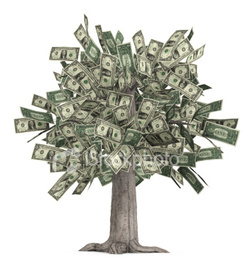 I was going to let pass last week’s announcement by the Metropolitan Museum of Art* that it was raising the price of its suggested admission without comment — but I changed my mind when no one seemed to add much historical context.
I was going to let pass last week’s announcement by the Metropolitan Museum of Art* that it was raising the price of its suggested admission without comment — but I changed my mind when no one seemed to add much historical context.
$25 — the new price — sounds awfully steep, even if it is “suggested,” and even if it’s the first increase in five years. Still, as director Thomas P. Campbell said in the press release, “…the average cost to the Museum of each visitor is $40, [so] we believe it is fair and, above all, necessary, to increase recommended admission levels at this time.”
The hike — from $20 — is also steep within the Met’s own context. In 1998, I wrote an article for The New York Times about museum prices, and though most of it was about special exhibition tickets (higher at many museums but almost never at the Met), I noted the Met’s suggested price of general admission at the time: $8. In 2011 dollars, that would be $11.04 — quite a difference from $25.
In that article, I quoted the late J. Carter Brown calling museums “a bargain” and comparing ticket prices to those at the Metropolitan Opera. Fair enough: you can — if you’re lucky — get $20 tickets to the Met.
Malcolm Rogers, then and now director of the Museum of Fine Arts-Boston, used Red Sox tickets as a comparison. Today, I checked Yankee prices and found bleacher seats as low as $5 and grandstand seats as low as $22 — though they go as high as $325.
Notice that range: it brings me to a related announcement and allows me to mount a hobby horse: variable pricing. The Met also just announced that it would open its very popular Alexander McQueen exhibition to the public on Mondays, when the rest of the museum is closed, for the price of $50 per person. It has done that before, a sign that the public has matured on the issue since 2006, when the Neue Museum backtracked from its plan to charge the public $50 on Wednesdays, when it’s normally open only to members.
This is a good thing. Airlines, theater, and many other places have succeeded in using variable pricing, with few or no complaints from the public, which has proven again and again that it understands the market (to this extent). In 2009, I wrote an opinion piece for Forbes magazine advocating variable pricing in the arts, specifically museums. Here was my guidance:
Besides charging extra on weekends, they could get a premium for the first hour every day. Many people delay seeing special exhibitions until the last minute; maybe prices should rise as the end nears. Or maybe tickets purchased online to avoid lines should carry a service fee, as they do for movies. To make variable pricing a success, the differential has to be meaningful. The benefits have to be obvious–early entry, fewer people, for example. And the public has to understand the rationale, knowing that those who can’t afford the premium are still welcome during most museum hours.
It’s time — or else we will see more, and bigger, general admission price increases.
* I consult to a foundation that supports the Met.
